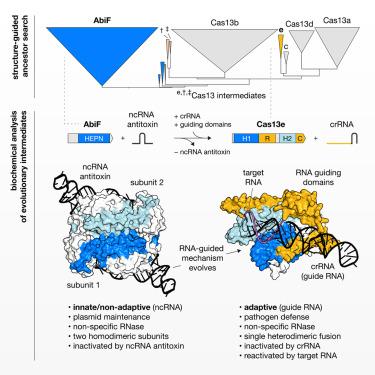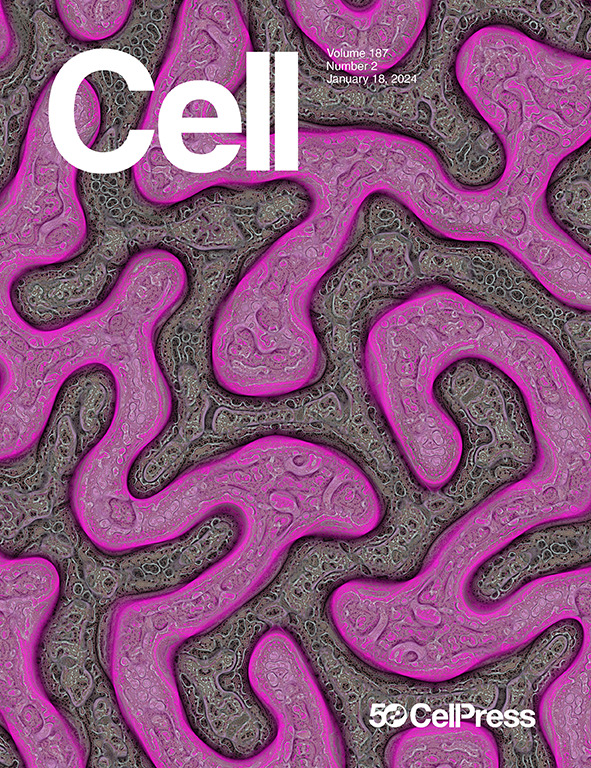Reprogrammable RNA-targeting CRISPR systems evolved from RNA toxin-antitoxins
IF 45.5
1区 生物学
Q1 BIOCHEMISTRY & MOLECULAR BIOLOGY
引用次数: 0
Abstract
Despite ongoing efforts to study CRISPR systems, the evolutionary origins giving rise to reprogrammable RNA-guided mechanisms remain poorly understood. Here, we describe an integrated sequence/structure evolutionary tracing approach to identify the ancestors of the RNA-targeting CRISPR-Cas13 system. We find that Cas13 likely evolved from AbiF, which is encoded by an abortive infection-linked gene that is stably associated with a conserved non-coding RNA (ncRNA). We further characterize a miniature Cas13, classified here as Cas13e, which serves as an evolutionary intermediate between AbiF and other known Cas13s. Despite this relationship, we show that their functions substantially differ. Whereas Cas13e is an RNA-guided RNA-targeting system, AbiF is a toxin-antitoxin (TA) system with an RNA antitoxin. We solve the structure of AbiF using cryoelectron microscopy (cryo-EM), revealing basic structural alterations that set Cas13s apart from AbiF. Finally, we map the key structural changes that enabled a non-guided TA system to evolve into an RNA-guided CRISPR system.

求助全文
约1分钟内获得全文
求助全文
来源期刊

Cell
生物-生化与分子生物学
CiteScore
110.00
自引率
0.80%
发文量
396
审稿时长
2 months
期刊介绍:
Cells is an international, peer-reviewed, open access journal that focuses on cell biology, molecular biology, and biophysics. It is affiliated with several societies, including the Spanish Society for Biochemistry and Molecular Biology (SEBBM), Nordic Autophagy Society (NAS), Spanish Society of Hematology and Hemotherapy (SEHH), and Society for Regenerative Medicine (Russian Federation) (RPO).
The journal publishes research findings of significant importance in various areas of experimental biology, such as cell biology, molecular biology, neuroscience, immunology, virology, microbiology, cancer, human genetics, systems biology, signaling, and disease mechanisms and therapeutics. The primary criterion for considering papers is whether the results contribute to significant conceptual advances or raise thought-provoking questions and hypotheses related to interesting and important biological inquiries.
In addition to primary research articles presented in four formats, Cells also features review and opinion articles in its "leading edge" section, discussing recent research advancements and topics of interest to its wide readership.
 求助内容:
求助内容: 应助结果提醒方式:
应助结果提醒方式:


